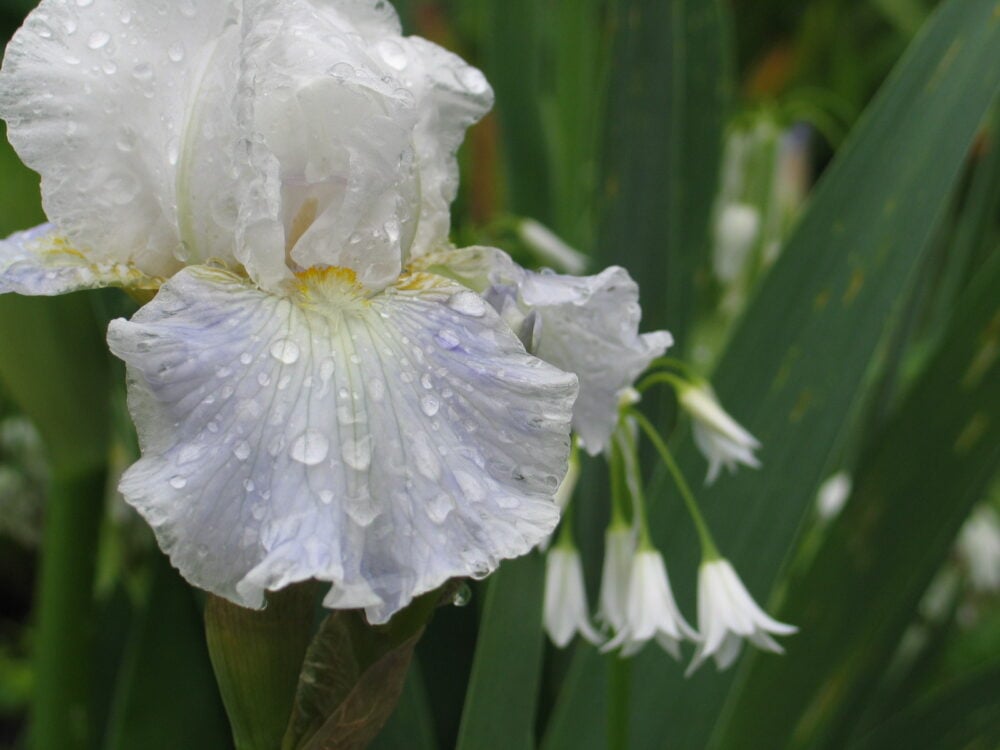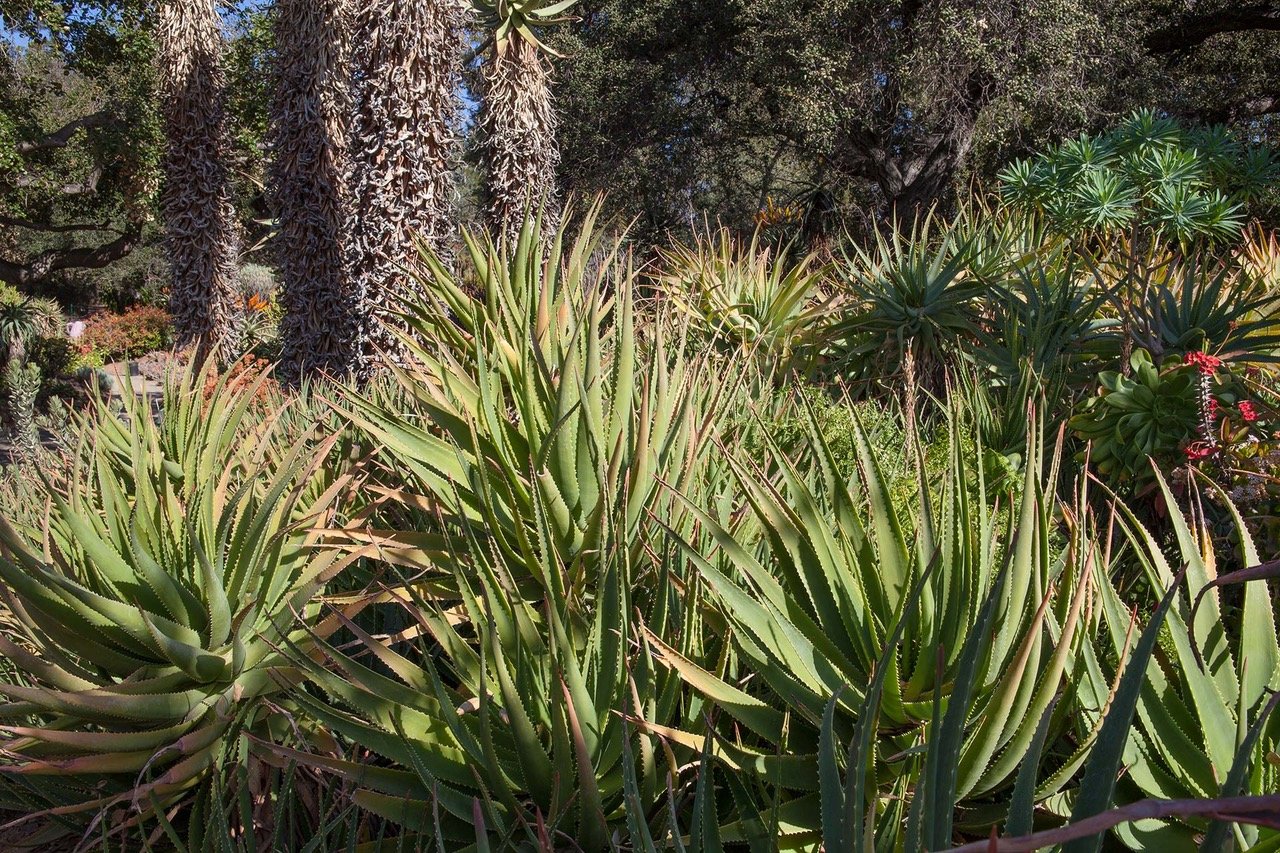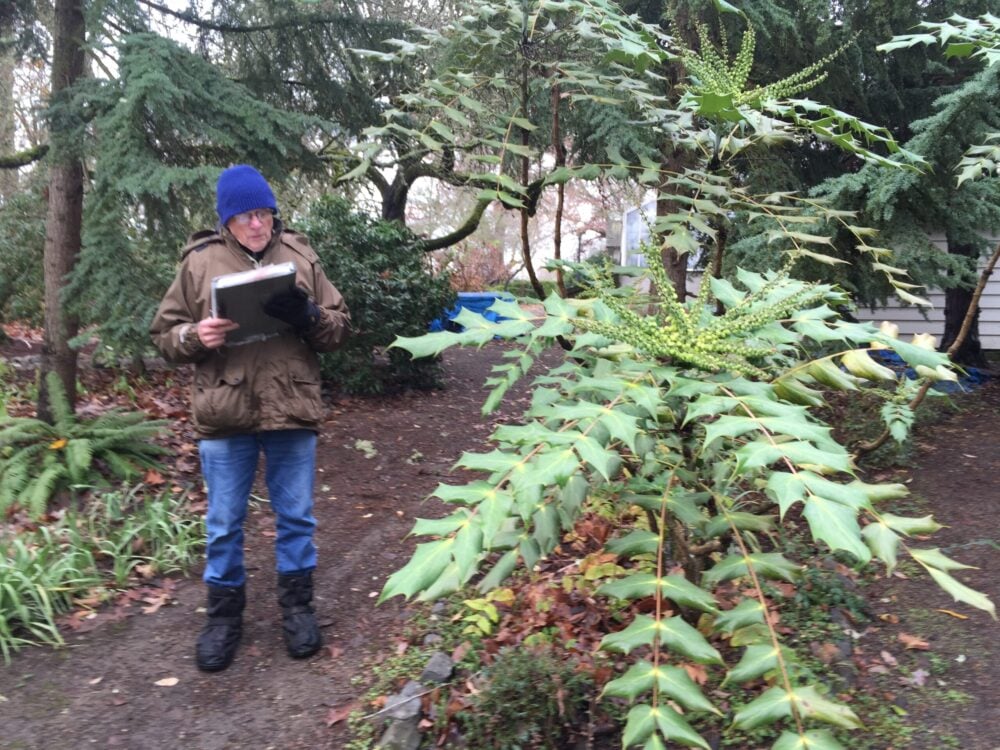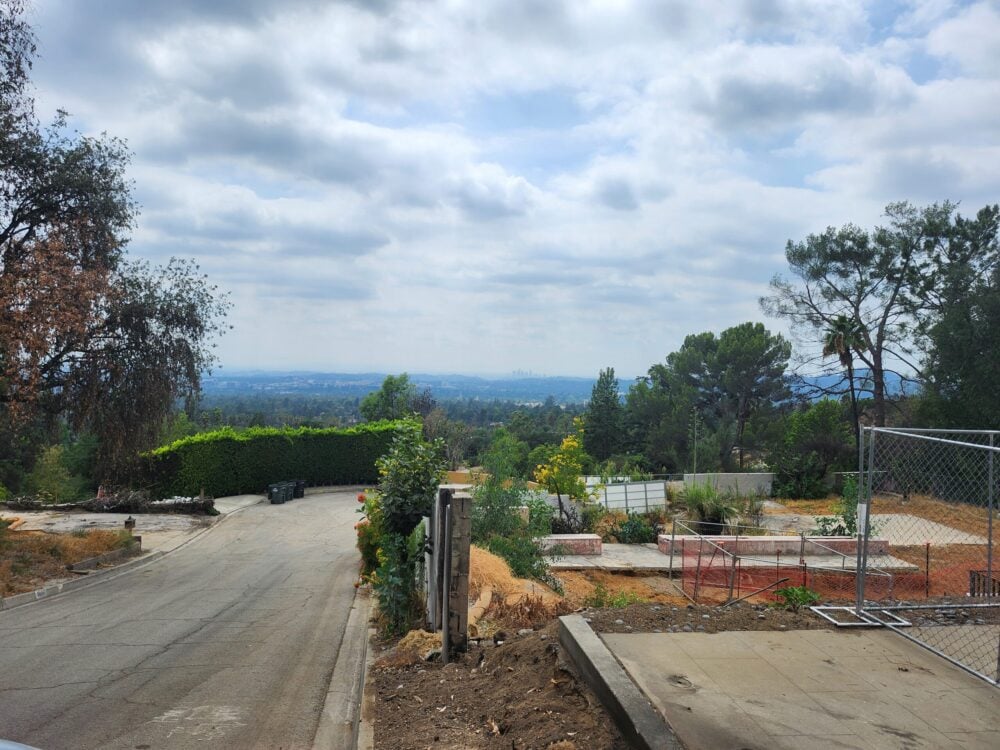
Camera Phones are Cameras: Find the Light

Contributor
- Topics: Inspired Gardens and Design, PH Photo Tips
Pacific Horticulture’s monthly photo series by renowned garden photographer and Pacific Horticulture Board Member, Saxon Holt of PhotoBotanic and Summer-Dry
Summer 2025
I have written six of these tips now about how to get better photos with a camera phone and I haven’t yet talked about light! There’s nothing more important than working with light. Learning how to read the quality of light is the single most important skill in garden photography. Even good composition will fail if the light is bad.
Photographers talk about “The Light” in reverential terms. It is the lifeblood of outdoor photography, as light is the lifeblood of plants for photosynthesis. Although camera phones are somewhat forgiving in bright light because we view the photos on such small screens, light is just as important to a quality photograph.
No matter how thrilling the scene or how beautiful it seems to be, in bright, sunny light a garden photograph is not going to work. I don’t even think about taking professional photos in hot light. Sometimes we have no choice if traveling and on a tight schedule, but don’t expect a good photograph in bad light.
I am frequently asked to give presentations or workshops to garden professionals and designers. I give this exact advice: if you want a good picture, plan for the light – don’t go out to a site on your lunch hour expecting to get portfolio quality pictures. Make a plan to photograph very early morning or very late afternoon.
I took this picture with my iPhone on a photo shoot last month. I did not run it through Photoshop on my office computer, though it is corrected within the phone app’s algorithm. More on apps in a future lesson.

I waited all afternoon for this photograph. I wanted the sun to go behind the trees for soft light in the garden and still have a backlit glow to the foliage. The added bonus of the starburst is simply positioning the camera quite carefully.
Garden photographers have different challenges with light than other outdoor photographers. We generally need soft light for plants to show well, whereas photographers who capture canyons and waterfalls, or buildings and barns, and clouds or sunsets use light differently, often looking for strong light to dramatize.
I took these next two photos about six hours apart for another recent project where I started scouting gardens during the day and went back to this one in the late afternoon when the light would be soft.

In both cases, it’s a good composition showing the stone pathway leading through lush plantings. The one in sunny daylight is perfectly acceptable but the better photo has soft light and more detail in the plants.
There are certainly going to be times when you’re stuck with bright light, and that’s the time to use the trick of back light. Once upon a time, in the days of crude cameras and film, Kodak advised photographers to always put the light over their shoulder, behind their back, so they were looking into away from the light. I’m sure this led to a lot of dull photographs.
When you were looking toward the light, and the light is behind your subject (not behind your back), we consider that as a back light. When you start to notice back light, you will see it creates a bright rim around the subject, highlighting it. And with garden photography, you can bring some translucency behind leaves and foliage.
This photo taken in the Desert Garden at The Huntington Library in the middle of the day is really an ugly shot.

The light coming from behind me is full of contrasted shadows. The colors are flat. It’s just not easy to look at.
However, I had a good feeling about using backlight and walking around to a path on the other side of these Aloes and I looked toward the sun.

Now it glows, and even the spines on the margins of the leaves are highlighted. It is now a fun photograph to look at. It was fun to find it.
As I have tried to emphasize in this entire series, a camera gives you the opportunity to slow down, explore, and look carefully. Camera phones can be serious tools to help you see. Don’t just grab the first photograph you see, spend the time looking, play with a light, find different angles. Camera phones are cameras.
Help Us Continue to Provide Content Like This
Do you want to ensure that Pacific Horticulture can continue to provide our optimistic stories of gardening in the Pacific Region?
If yes, we need your support now more than ever.
Please consider Becoming a Member or Making a Tax Deductible Donation Today
How are gifts used?
Every dollar of support goes directly to creating educational content within our very lean operation. While much of our team are volunteers, we strive to our editors and staff fairly for their time. This supports our strategy to increase the number and impact of climate resilient gardens and landscapes.
I began Camera Phones Are Cameras with this full disclosure: I have been a professional garden photographer for 40 years and do not take any of my professional photos with a camera phone. However, almost all the tips I give in my workshops apply to any camera, recognizing the camera is only a tool to capture an image.
It is up to you to take the picture, and if used with intention and consciousness any camera or camera phone can take wonderful pictures; especially if you learn a few techniques.
Read the Full Series Here

Pacific Horticulture Photo Tips Series
We have created a new Landing Page for all of Saxon Holt’s ‘Camera Phones are Cameras’ series of wonderful iPhone tips and tricks.
Resources
For more tips, visit Saxon’s Garden Photography Workshop on PhotoBotanic.com
Visit The Learning Center at PhotoBotanic.com for great books about Garden Photography
Visit PhotoBotanic for more inspiring photographs by Saxon Holt
Learn More About Summer-Dry and Celebrate Plants in Summer-Dry Climates











Responses